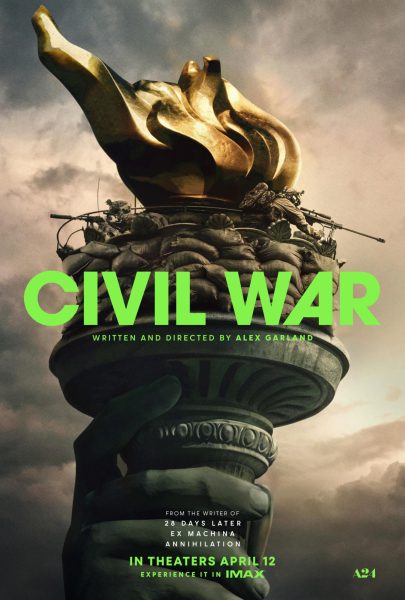Just An Art School
This past summer, I did a lot. From waking up early every morning for cross country practice, to working 4 days a week, hanging out with friends, visiting family, traveling to different places, this summer has frankly been busy. Still, it was quite enjoyable. Of all the things I devoted my time to this summer, one thing that I really wanted to do this summer break was visit at least ONE college, to begin my college search and get a scope of what kind of school I wanted to attend for the next four years after I graduate in 2021.
So, just to keep things easy, I wanted to pick somewhere close. Of course, living only approximately 26 miles from Glen Ellyn, I thought it would be feasible to go to the School of the Art Institute. Though this might not be the first choice for any typical student, I want to go into photography and photojournalism, which SAIC would be a potentially good match for my major. Therefore, I think the specificity offered at an art school such as this would allow me to realize if I enjoyed a school focused on a certain specialization or if I wanted more of a multi-disciplinary university.
So, one Saturday morning in July, my mom and I took the Union Pacific Northwest line from Glen Ellyn to Ogilvie and trekked our way up State Street, turning down Wabash, to get to the visitor’s center of the Art Institute of Chicago. We checked in, walked a bit, toured the school, residence halls, and had a magnificent time.
However, something about my visit as a whole left me dumbfounded and frankly a bit uncomfortable. The whole time, I remembered thinking “sure, this is great and all, they offer a variety of majors, programs, the residence halls are great, the location is great, albeit, a little too close to home for my liking, but still, this is just an art school.”
And so I left the visit labeling the world-renowned School of the Art Institute of Chicago as just an art school.
From the get-go, I think that we as constantly evolving and growing humans, going from a young child to maturing adolescents to full-fledged adults are constantly asked what we want to do when we grow up, even when we have little experience and gage of what we want to devote our careers to. Now, as college is on the horizon for me as a rising junior, what I want to do is increasingly entangled with the question of how comfortable I want to be financially. After specifying my aspirations career-wise recently, my thoughts of becoming a photojournalist, writer, and/or photographer has been met with loads of positivity but always with an undertone of “are you sure?” While at first this attitude to my potential career path made me perplexed, I had realized this notion was presented due to the fact that photographers, at least to start, do not make as much as say a doctor, nurse, lawyer, or some big major that has a much higher baseline salary.
This feeling of my dream career being “just a photographer” or “just a journalist” frankly made me feel low and my aspirations seem invalid. Was I not good enough? Could I not succeed in this career and would I be living on the street in a cardboard box? Okay, that escalated quickly, but you get what I mean.
I let a couple of weeks past and it was late July and I finally convinced myself to start my summer homework. I passed through APES and APUSH easily and then had some articles to read for argumentative writing for my AP English Language class. To my delight, I really enjoyed the articles and found them quite interesting, but in particular, one struck out to me. The article, well multimedia peace, was a TED Talk by Sir Ken Robinson, called “Do Schools Kill Creativity?”
Although I cannot say I am the biggest fan of TED talks, personally because of the length, I sat through and was fully engaged in this 19-minute exposé of pure opinion and raw emotion. Robinson discussed that the capabilities of the education system itself are limited: “Nobody has a clue […] what the world will look I like in 5 years time.”
He went on discussing how from a young age the future generation, or kids today, have “extraordinary capacities” and that “all children have tremendous talents and [yet] we squander them.” Robinson made his point clear: creativity and exploration of self are important but it is not stressed in everyday schooling.
“Kids,” Robinson explains “will take chances and if they don’t know, they’ll go.” The beauty is this that “They’re not frightened of being wrong.” This idea coincides with his claims on creativity because “if you’re not prepared to be wrong, you’ll never come up with something original.”
However intriguing and utterly inspiring this message may be, the reality is that mistakes are frowned upon. Mistakes are often the worst detriments in the education system because “we stigmatize mistakes,” according to Robinson. One of the most prolific phrases that he mentions is that “all children are artists, but the problem is to remain an artist as you grow up.” The pressure of grades, being a perfect student, and following the path of what one should accomplish in school deters this authenticity and originality.
Of course, he is not talking just about artists but that of creativity. Children are creative beings and are ignorant of the world around; thus they are free to create and learn. However, as they grow up, the emphasis of schooling is placed on common core and of careers that deal with the humanities, mathematics, and languages. This hierarchy of learning is a topic Robinson mentions. Why do we possess this hierarchy? Money and the feasibility of a defined and secured success.
“Many highly talented, brilliant, creative people think they’re not” exclaims Robinson. Why? Due to the fact that they are denied the freedom to pursue their creative endeavors “on the grounds [that] [they] would never get a job doing that.” This conflict with reality and finances twists and manipulates the possibility of pursuing a dream career and happiness. Robinson strikes the problem at the root of its calamity, the education system, and poignantly portrays the underappreciation and misrepresentation of the arts in schools not only refrains from catering students who have the potential to excel in this area, but also as a whole produces a lack in creativity across generations. “We have to rethink the fundamental principles on which we are educating our children,” Robinson reveals, or we risk the loss of ruining a whole generation of potential creatives into a load of unneeded limitations.
So after contemplating this TED Talk and my visit to the School of the Art Institute of Chicago, I came away with a lot. Not only did I immediately relate the connection between the lackluster feeling I had from a retrospectively amazing visit to this TED talk, but I realized something very important. While the fundamental principles of the education system might not cater to what I want to do and succeed in later in life, the ability for me to continue into this major and succeed is still nevertheless an option. To put it shortly, nothing is stopping me.
However frustrating it might be that I focus more on seemingly pointless science that I will never use and facts and data that have pulled me away from art and creating, writing, etc. just for the need to get an “A” or continue successfully in schooling, there is no one stopping me from continuing in the path I want.
Sure, there are easier, safer, more financially stable jobs and career choices, it is that what I want to be doing? A compromise? Never. The fact of the matter is that I have the choice, and just like a child, I can make mistakes but there is limiting me except that of the expectations of what a proper student or proper career is, which can be avoided and ignored, within reason and responsibility. It is time for me to think, decide, and go. Whoever stigmatizes my mistakes stigmatizes my mistakes. That is that.
With all the stresses of college and the crazy academics, athletics, and extracurriculars I will have to conquer these next two years before going off to a four-year university, this issue, as serious as it might be, can also seem light. Focusing more on my past, this issue and this conflict with what I want to do and what I am expected of has been ingrained in me for as long as I can remember. Even so, my favorite movie as a child was Mulan. With its newfound relevance in Disney’s live-action remake, the same theme remains true: one can go against what is expected of them and still remain true to themselves and bring honor and succeed.
I will remember my visit to the School of the Art Institute. Sure it was not the school for me for other reasons, but I should never have let the fact that it was an art school be a deterring factor from it being a possibility. It is more than an art school: it is a place that caters to what I would need and what I would like to continue in. Although it is not for me, I learned something ever so important from this visit and from the latter video: the world waits for no one and even when the odds may be against me, I should not back down from something I love, something I enjoy, and something that is right for me. No matter how low the arts may be on the hierarchy of education or society’s fear of someone being wrong, I will not allow scrutinization or the “what if you don’t make enough money?” questions get in the way of my hopes and my future.
So, from here on out, I am going to take this summer, my first college visit, the knowledge I absorbed from my AP English Language and Composition assignment, and use my “extraordinary capacities.” I plan on going into junior year, ready to make lots of mistakes, take chances and just go forward.

William is currently a senior and is thrilled to be apart of the Glen Bard Editorial Board for his fourth year as the Co-Editor-In-Chief. Besides writing...




